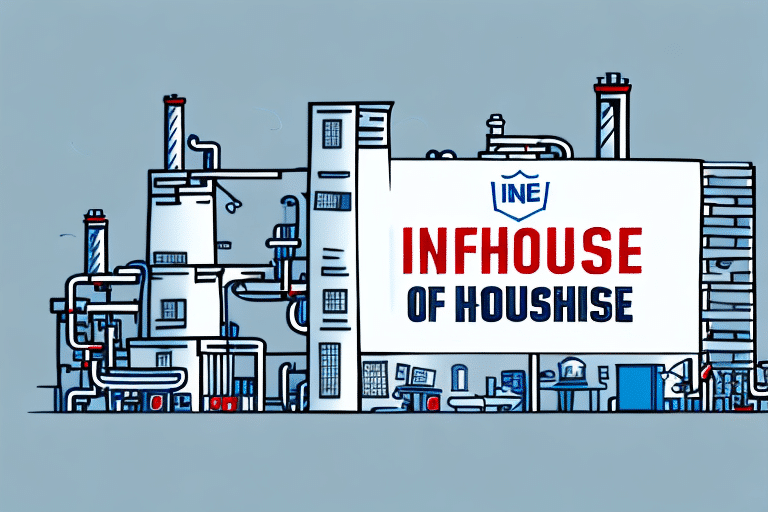Driving Growth by Bringing Operations In-house
In today's competitive business landscape, companies are constantly seeking ways to reduce overhead costs, enhance efficiency, and drive growth. One of the most effective strategies to achieve these goals is by bringing operations in-house. This article explores the advantages and disadvantages of in-house operations, identifies industries that can benefit the most, and outlines best practices for a successful transition.
The Pros and Cons of In-house Operations
Advantages of In-house Operations
Bringing operations in-house offers several benefits that can make the investment worthwhile:
- Greater Control: Companies have increased control over their operations, leading to better quality control, faster turnaround times, and a more streamlined workflow.
- Stronger Relationships: In-house operations foster stronger relationships with employees and suppliers, promoting a more collaborative and cohesive team environment.
- Customization: Processes and procedures can be tailored to fit the specific needs of the company, allowing for greater flexibility and alignment with company goals.
Drawbacks of In-house Operations
However, there are potential challenges to consider:
- Initial Costs: Transitioning to an in-house model involves significant upfront expenses, including hiring new employees, investing in equipment, and expanding office space.
- Resource Intensive: In-house operations require substantial time and resources for training and development to ensure employees possess the necessary skills.
- Scalability Issues: For smaller businesses or those with limited resources, outsourcing may be more cost-effective and scalable.
Cost Reduction and Efficiency through In-house Operations
One of the primary motivations for companies to bring operations in-house is to reduce costs and enhance efficiency.
Supply Chain Control
In-house operations provide greater control over the supply chain and production processes, enabling better inventory management, waste reduction, and workflow optimization. According to a report by McKinsey & Company, companies that effectively manage their supply chains in-house can reduce operational costs by up to 20%.
Faster Turnaround Times
By streamlining production processes, companies can achieve faster turnaround times, which is crucial for meeting customer demands. This increase in output can lead to higher revenue generation.
Flexibility and Quality Control
In-house operations allow companies to adjust their production processes quickly in response to market changes and customer needs. Additionally, greater oversight ensures that products meet quality standards, enhancing customer satisfaction and brand reputation.
Key Industries Benefiting from In-house Operations
While in-house operations can benefit various sectors, certain industries stand to gain the most:
Manufacturing
In manufacturing, controlling the entire production process can lead to significant efficiencies and reduced dependency on third-party suppliers.
Logistics
Logistics companies benefit from in-house operations by streamlining distribution processes and minimizing the time required to move goods between locations.
Information Technology
For IT companies, in-house operations support better data management and security. An in-house IT team ensures that software and technology infrastructure remain up-to-date and fully integrated.
Healthcare
In healthcare, having in-house medical staff and pharmacy services allows for more personalized patient care and better management of medical inventories.
Hospitality
Hotels and resorts can enhance efficiency and guest experiences by managing housekeeping, maintenance, and food & beverage services in-house.
Best Practices for Transitioning to In-house Operations
Define Clear Goals and Objectives
Start by identifying the overall goals, which will guide decisions on which operations to bring in-house versus outsource.
Evaluate Existing Infrastructure
Assess current equipment, facilities, and workforce to determine necessary changes to support the transition.
Assemble the Right Team
Select or hire employees with the skills required for the new operations. Investing in the right talent is crucial for a successful transition.
Establish Effective Communication Channels
Maintain clear communication with employees, customers, and suppliers throughout the transition to ensure smooth operations and manage expectations.
Technology's Role in Streamlining In-house Operations
Leveraging technology is essential for optimizing in-house operations:
Enterprise Resource Planning (ERP) Systems
ERP software integrates various business processes, providing real-time insights and enhancing decision-making capabilities.
Customer Relationship Management (CRM) Tools
CRM systems improve customer interactions and streamline sales processes, contributing to increased efficiency.
Supply Chain Management Systems
Advanced supply chain management tools help in tracking inventory, managing suppliers, and optimizing logistics.
Benefits of Technology Integration
- Reduced Errors: Automated processes minimize human errors, reducing costly mistakes.
- Scalability: Technology allows for easy scaling of operations as the company grows.
- Enhanced Collaboration: Improved communication and data sharing across teams lead to better collaboration.
According to a study by Gartner, companies that effectively implement ERP systems see a 15-20% improvement in operational efficiency.
Building and Maximizing an In-house Team
Hiring the Right Talent
Recruit individuals who possess the necessary skills and align with the company's values and objectives.
Employee Development
Invest in ongoing training and development programs to enhance employee skills and foster a culture of continuous improvement.
Fostering a Positive Workplace Culture
Create an environment that values teamwork, communication, and collaboration to keep employees engaged and productive.
Providing the Right Tools and Resources
Ensure employees have access to the necessary tools, software, and equipment to perform their jobs effectively.
Measuring ROI and Success of In-house Operations
Establish Key Performance Indicators (KPIs)
Identify metrics such as production output, turnaround times, and cost savings to evaluate the success of in-house operations.
Utilize Data Analytics
Employ data analytics tools to track performance against KPIs and identify areas for improvement.
Continuous Optimization
Regularly assess operational processes to optimize performance and drive sustained growth.
Case Studies: Success Stories of In-house Operations
Wal-Mart
Wal-Mart transitioned its distribution operations in-house, gaining greater control over its supply chain and significantly reducing costs.
Apple
Apple brought chip production in-house, enhancing product quality and reducing manufacturing costs, which contributed to its competitive advantage.
These examples highlight the potential benefits of in-house operations and offer valuable insights for other companies considering this transition.
The Future of Business Operations: Is In-house the Way Forward?
As technology advances and the global business environment becomes more competitive, the trend towards in-house operations is likely to continue. However, this model may not suit every company. The decision to bring operations in-house should be based on a comprehensive evaluation of the company's goals, resources, and infrastructure.
For many organizations, in-house operations represent a promising path to achieving growth objectives and ensuring long-term success. However, it's essential to weigh the benefits against the challenges and make informed decisions tailored to the specific needs of the company.






















